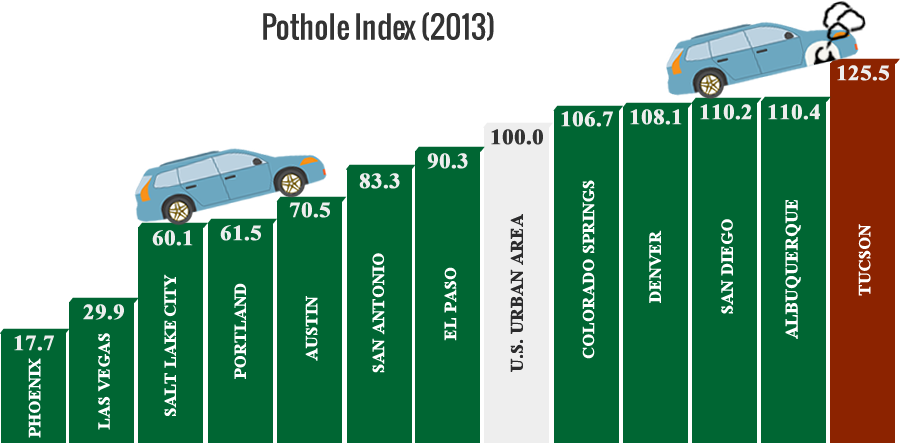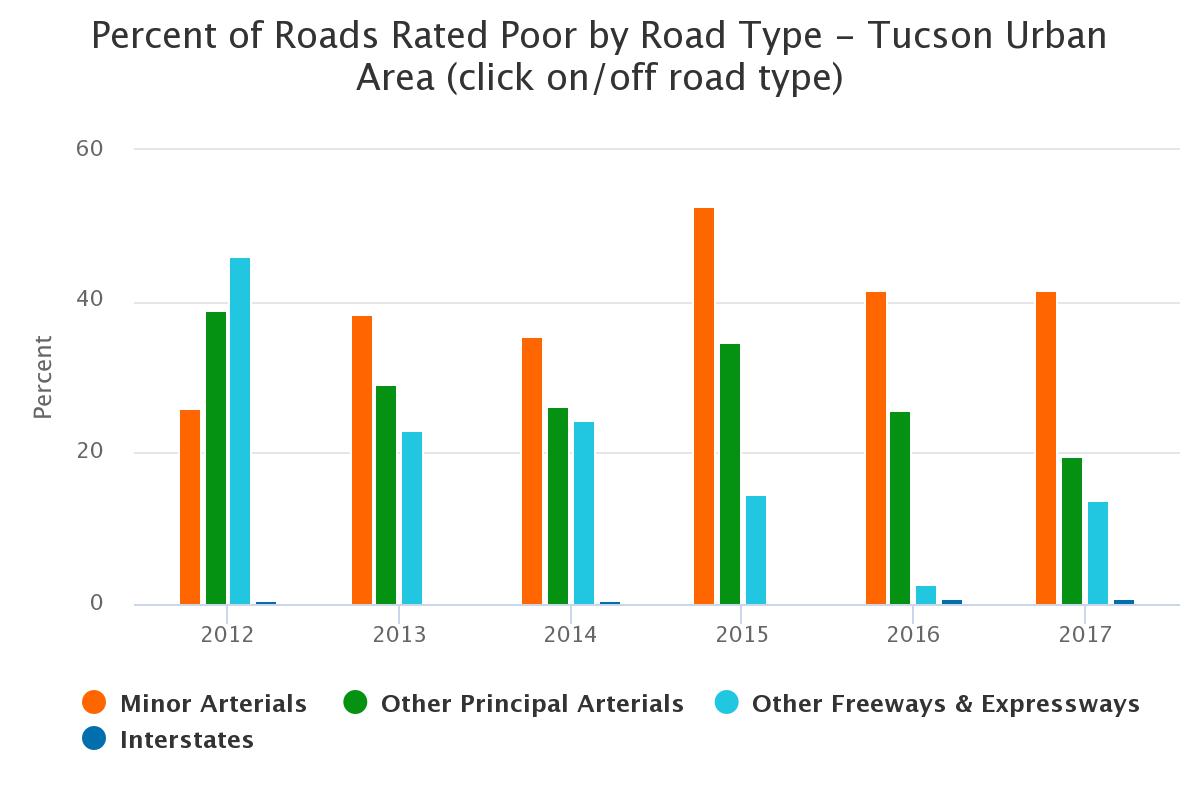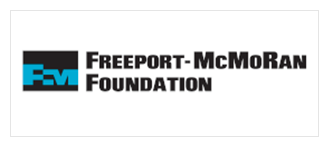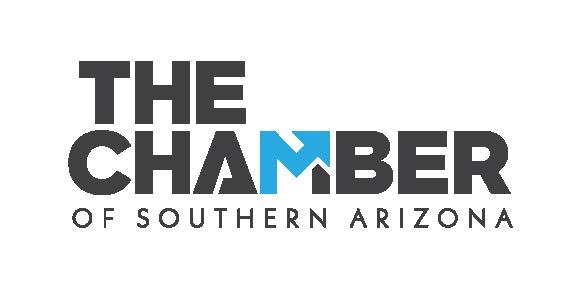Updated data for 2013 suggest that Tucson roads improved compared to 2012, but remained rougher than the national average and the 11 western urban areas.

Tucson again had the highest pothole index in 2013, at 125.5, compared to 11 other western urban areas. Since the U.S. urban area average was 100.0, the index implies that Tucson’s roads were 25.5% rougher than the U.S. urban area average.
Tucson’s high Pothole Index arose because our other principal arterial roads are rough and they get a large share of traffic, compared to other urban areas. Other principal arterials are heavily used urban roads that collect traffic from intersecting residential streets, and direct it toward employment or business centers, or other travel routes such as freeways and interstates. Examples for Tucson are Grant Road, Speedway Boulevard, and Broadway Boulevard. In 2013, the Federal Highway Administration (FHWA) estimated that 29.2% of our other principal arterials rated poor. That is a very big deal, because 49.7% of local vehicle miles traveled were on other principal arterials (the largest share of any of the 12 western urban areas).
The roads in Albuquerque, San Diego, Denver, and Colorado Springs were also rougher than the U.S. urban average.
Phoenix had the lowest index in 2013, as it did in 2012. Indeed, the Phoenix Pothole Index was 82.3% below the U.S. average. Las Vegas, Salt Lake City, Portland, Austin, San Antonio, and El Paso also had Pothole Indexes below the U.S. average in 2013.
Compared to the U.S., road conditions in the Tucson urban area improved in 2013, with the Pothole Index dropping from 145.8 to 125.5. This reflects local investments made to improve road conditions within the urban area. The share of other principal arterial roads declined from 38.9% in 2012 to 29.2% in 2013 reflecting smoother roads. In addition, other freeways and expressways improved in 2013, with the percent rated poor falling from 45.9% to 23.0%. Local interstates improved as well. In contrast, minor arterial roads got rougher in 2013, with the percent rated poor rising from 25.9% to 38.2%.

The Pothole Index accounts for both the roughness of major roads within each urban area (by road type) and the degree to which those roads are used by local drivers. Thus, a very rough road type which gets a lot of traffic will tend to increase the Pothole Index for an urban area. In more technical terms, we weight the share of major roads (by road type) rated poor by the Federal Highway Administration by the vehicle miles traveled on those roads. To see the underlying data, check out “Rough Roads 2013”.













